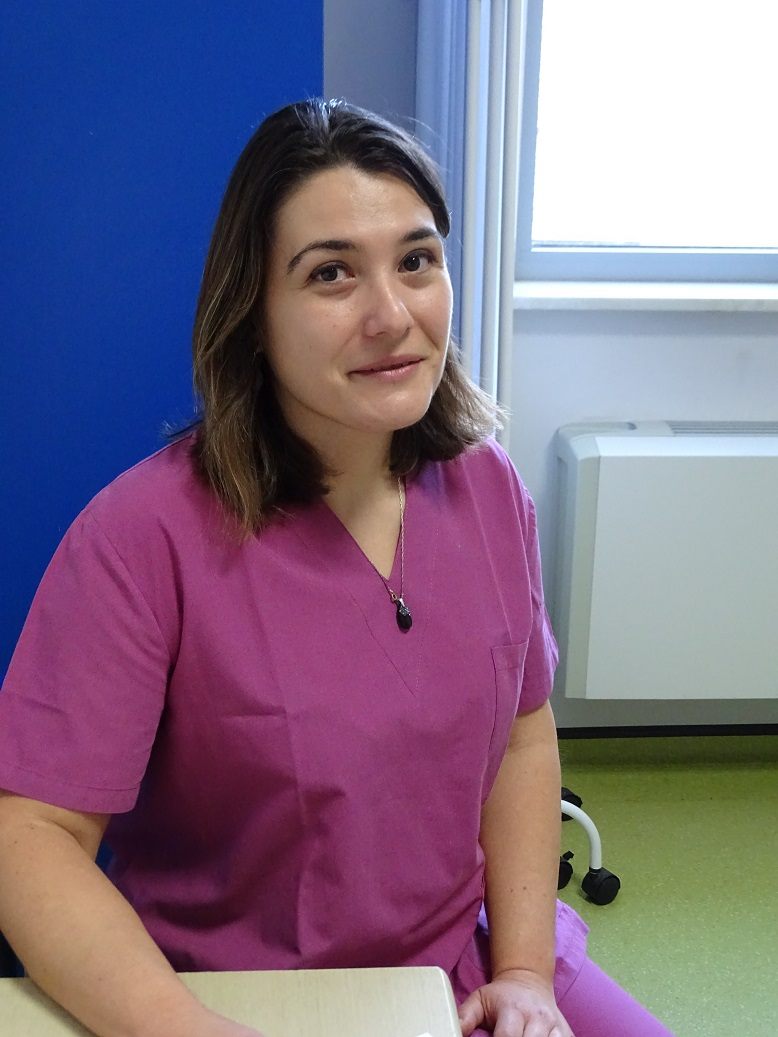Dr. Lilyana Yordanova graduated from the Medical University of Varna in 2003. Immediately after graduation, she started working as a doctor in Emergency Medical Services, and a year later, she transferred to the Obstetrics Department, where she worked as a resident physician. In 2009, Dr. Yordanova specialized in “Obstetrics, Gynecology, and Reproductive Medicine.” Five years later, she received a certificate in “Ultrasound and Doppler Diagnostics in Obstetrics.”
What is hysteroscopy?
Hysteroscopy is an endoscopic method for inspecting the inside of the uterus, which allows for the diagnosis of intrauterine diseases and their surgical treatment. This procedure uses an optical telescope with a diameter ranging from 3 to 10 mm, which provides an image from the uterine cavity onto a monitor. Each hysteroscope is also equipped with a set of working instruments used for surgical treatment. Hysteroscopy is available at UMHAT “Kaneff” so patients do not need to travel to another city for diagnosis and treatment.
What are the advantages of this method compared to other similar methods, such as ultrasound or X-ray?
With hysteroscopy, everything is visible on a monitor screen in natural color, which can be observed by multiple doctors and recorded for consultation with other specialists. In contrast, other methods, such as ultrasound and X-ray, produce black-and-white images. Hysteroscopy also has no harmful effects, unlike X-ray examinations. It also allows for tissue samples to be taken for further examination.
How long does a patient need to stay after such a procedure?
Classic hysteroscopy, which is offered in many healthcare facilities, can be diagnostic or operative. Techniques and methods used require short-term intravenous anesthesia. The cervical canal must be dilated, followed by the hysteroscopy (diagnostic or operative). Typically, the patient stays for observation in the department for at least one day.
In what cases is this examination appropriate?
-
Myomas located towards the uterine cavity
-
Polyps in the uterine lining
-
Suspected uterine septa or abnormal shapes of the uterine cavity
-
Suspected cancerous development in the uterine lining
-
Prior to hormone replacement therapy during menopause
-
Unclear cases of infertility
-
Incomplete pregnancy (also known as infertility)
-
Bleeding after the placement of an intrauterine device
-
Difficulty in removing an IUD or for locating and removing broken pieces of it
-
Any type of uterine bleeding with an unclear cause
-
Hormonal therapy after breast cancer surgery
What is amniocentesis?
It is extremely important to note that amniocentesis is performed in the Obstetrics and Gynecology complex as part of a clinical pathway. Amniocentesis is done to detect genetic disorders in the fetus by taking a sample of amniotic fluid for genetic analysis during pregnancy. It is the most commonly used method to check the genes or chromosomes of the baby for specific genetic changes, and it may be offered for various reasons.
How is amniocentesis performed?
Amniocentesis involves taking a small amount of amniotic fluid, which surrounds the baby in the uterus. First, an ultrasound is performed to check the position of the baby and the placenta. Then, the skin over the uterus is cleaned with an antiseptic solution, and a fine needle is passed through the skin and abdominal wall to the uterus. About 15 ml (approximately three teaspoons) of amniotic fluid is drawn with a syringe. This fluid contains cells from the baby’s skin, which can be tested in the laboratory to check its genes and chromosomes.
When is amniocentesis performed?
Amniocentesis is performed after the 16th week of pregnancy (between the 17th and 19th weeks).
Is this procedure painful for patients?
Most women describe amniocentesis as uncomfortable but not truly painful. It typically takes about 5 minutes to complete. Some women may experience tightening in the uterus or mild discomfort for a day, which is not unusual.
What happens after amniocentesis?
The procedure takes just a few minutes. A few days after the amniocentesis, it is important not to overexert yourself. Lifting heavy objects and intense exercise should be avoided. If you experience discomfort in the abdominal area for more than 24 hours, fever, unusual discharge, or bleeding, you should immediately contact your doctor.
How long does it take to get the result from amniocentesis?
The time for receiving results depends on the tests that will be conducted. For some genetic changes, the result is available in about 3 working days, while for others, it may take 2-3 weeks. If the results take longer, this does not necessarily mean that something is wrong—it just means that culturing the cells has taken longer.
What other non-invasive procedures are performed in the Obstetrics and Gynecology complex at UMHAT “Kaneff”?
The future lies in bloodless surgery. We offer minimally invasive operations such as the removal of ovarian cysts, removal of an ectopic pregnancy, removal of endometriosis lesions, and removal of subserosal fibroids.
What are the advantages of these types of surgeries?
Laparoscopy is an excellent method for performing gynecological surgery. Despite the complexity of the operation, most women recover very quickly afterward. Bloodless methods are increasingly being used in medicine and are applied to more and more surgical and gynecological conditions. Laparoscopy is performed under general anesthesia in an operating room. The main advantages are in short-term results: less operative trauma, less postoperative pain, faster recovery of bowel function, earlier feeding and mobilization, fewer postoperative complications, shorter hospital stay, and a quicker return to normal activity for patients. An important part of informed consent is the discussion between the patient, her family (if desired), and the doctor regarding the risks and benefits of each planned procedure.

